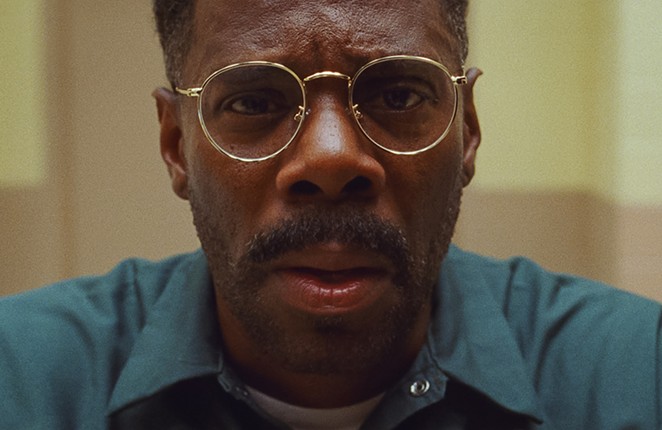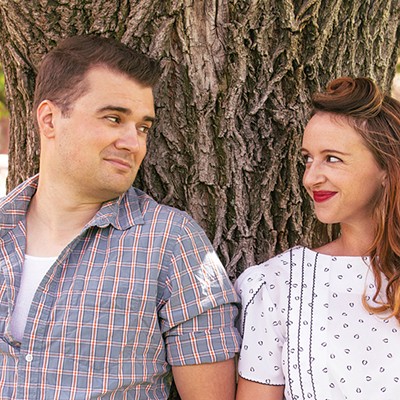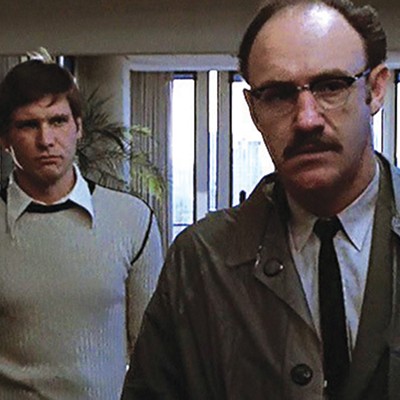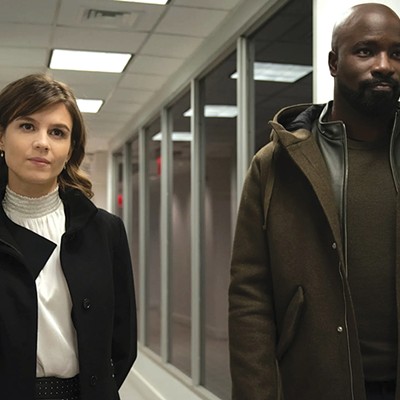My dream format for writing about movies would be to write about one big and one little movie every week. That way I can be a part of the conversation connected to the newest blockbuster everyone is watching while also trying to bring attention to a smaller movie that deserves more eyeballs aimed at it. It's basically like trying to have my cake and eat it too, but it's sometimes impossible to find opposing movies every week that are both worth talking about. This week, however, is perfect, with the still-crushing-it-in-the-box-office "Beetlejuice Beetlejuice" and the much smaller arthouse crowdpleaser "Sing Sing." Also, I will never have another chance to do two movies with identically repetitive alliteration for titles, so my OCD also wins this week.
Listen, I will ultimately watch Michael Keaton read from the phone book for two hours if you let me, so I feel like an ungrateful child for complaining about a new "Beetlejuice" movie, but also maybe Mr. Keaton, Winona Ryder, Catherine O'Hara and company deserved a better script to play with. So much of the film feels like it was written by committee, where five or six of the story threads only exist to fill time and not focus on the characters we actually care about.
What the original "Beetlejuice" did so well (aside from weaponizing Tim Burton's gothic whimsy house style) was how it used the characters. We have a newly dead couple discovering the universe of the afterlife along with the audience, so we meet Michael Keaton's "Beetlejuice" along with them, and his trickster demon shenanigans are just as shocking to us as it is to our dead protagonists. A bunch of dead people can't sustain an entire Hollywood movie, so then we're introduced to the Deetz family, who moves into the newly dead couple's beloved home and starts turning things upside down.
Wynona Ryder's Lydia Deetz was such an iconic '80s character because she was one of the first mainstream goth teenagers in pop culture history, and her blend of dry humor, ideation of death and plucky badassery made her unforgettable. Picking up with Lydia almost 30 years later in the sequel removes all of what made the character such an original creation. Now Lydia feels like a castoff from a Hot Topic clearance sale, making a living as a television medium and trying to connect with her estranged daughter (played by the typecast Jenna Ortega).
Without going into the plethoric plot machinations, Lydia hooks up with Keaton's Beetlejuice again to save her daughter from a terrible teenage boy, while he needs Lydia to protect him from his undead ex (played by Monica Bellucci looking like Sally from "A Nightmare Before Christmas"). Did we need Beetlejuice backstory? Probably not, but at least we could have gotten one more interesting than this.
It's great to see Keaton hamming it up as the ghost with the most again, and Tim Burton seems more energized as a filmmaker than he has since at least "Sweeney Todd," but it all feels like cosplay and not a story worthy of these characters. When I most definitely run into a drunk guy dressed like Beetlejuice on Halloween, if I ask him to tell me about his night, it will almost certainly be a more interesting story than the one "Beetlejuice Beetlejuice" tells. Still, there are lots of cool practical effects, and I love Tim Burton's vision of the afterlife, so I would probably watch another one of these and, since it's already made a quarter of a billion dollars, I'm sure we'll get many more.
On the opposite end of the spectrum is "Sing Sing," a tiny movie about a prison arts program putting on a play. Shot on 16 mm over 19 days and around several decommissioned prisons, "Sing Sing" focuses almost exclusively on the transformative power of art, the way that performance can help process pain and the humanization of people most of the world give little or no thought to at all.
The great Colman Domingo plays John "Divine G" Whitfield, an innocent man serving 25 to life in New York's Sing Sing Maximum Security Correctional Facility. Along with a few other inmates, he puts on performances with the real-life Rehabilitation Through the Arts program, helping men who have no outlet for their trauma and emotions find a way to be vulnerable with themselves and others.
Domingo is astonishing and, along with Clarence "Divine Eye" Maclin (an actual participant in the RTA program), creates a living, breathing world that lets us inhabit and empathize with an entire society of people most of us have no context to relate to or understand. Director Greg Kwedar gives us a beautiful example of the possibilities inherent in the arts, and "Sing Sing" proves that the real importance of cinema has nothing to do with the budget or how much money a single movie makes. I'd be shocked if "Sing Sing" didn't get nominated for lots of Oscars come awards season, and I'll be incredulous if Domingo and Maclin aren't nominated for their performances.
"Sing Sing" and "Beetlejuice Beetlejuice" couldn't be more different, but they do show the limitations of the movie industry. When a movie like "2 Fast 2 Beetlejuice" has millions at its disposal for marketing, millions of people are guaranteed to see it, whereas a genuinely important film like "Sing Sing" has barely made over $2 million since it's been released. Word of mouth is where something small and beautiful like this finds its audience. So here I am, yelling into the wind to find the art inside all the noise.
























